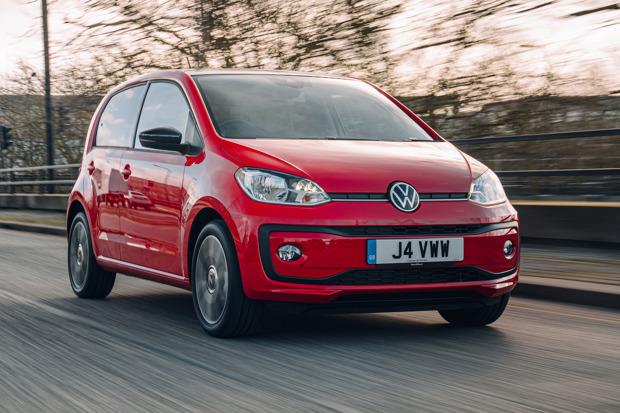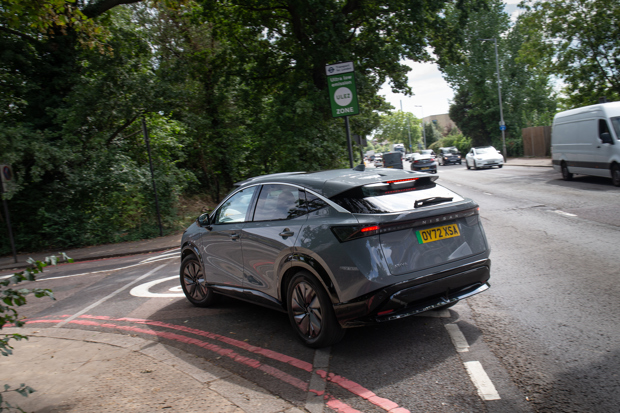Cars with cheap road tax 2025
.jpg?width=620)
Some motoring costs are unavoidable. Fuel, insurance and depreciation are just three of the things you'll need to consider when buying a car. Fortunately, car road tax – officially Vehicle Excise Duty (VED) – is something you can manage.
Indeed, you could end up paying as little as £20 or £35 a year for a used car with low CO2 emissions. That's because cars registered between 1 March 2001 and 31 March 2017 followed a different tax regime, which incentivised low-CO2 vehicles.
Cars in band B (101-110g/km) cost £20 a year, while those in band C (111g/km-120g/km) cost £35. It gets better, because it costs nothing to tax anything in band A (up to 100g/km).
Since April 2017, only electric cars are exempt from tax, but everything will change in 2025 when even EVs will pay the lowest first year rate of VED.
Here, we've selected 10 of the cheapest cars to tax. Some are old, others are new, with a choice of petrol, diesel and electric options.
Cheapest cars to tax
|

Volkswagen Up
The Volkswagen Up is a popular money-saving motor, and a great one at that. The three- or five-door city car benefits from trademark Volkswagen build quality, so it feels solid, plus it's good to drive and quite refined for such a cheap car. It’s reliable and robust, and becoming increasingly good value as a used car. The 1.0-litre petrol engine is also extremely fuel-efficient, which means CO2 emissions are low. Some pre-April 2017 models fall into road tax band A, so owners don’t have to pay anything. Others are band B, and will cost £20 a year. Even the sporty Up GTI is one of the cheapest cars to tax, despite its enthusiastic performance.
.jpg?width=620)
Citroen C1
The Citroen C1 is a popular, very affordable city car that was sold across two generations. All models feature an economical 1.0-litre petrol engine, and are among the cheapest cars to tax. Most C1s fall into road tax band A, so tax is free. A few other variants are tax band B, costing £20 a year. The C1 is really fun to drive, with nimble handling and a lively engine. It’s also a great choice for new drivers, with excellent visibility and light controls. Being so short, it’s simple to park in town, while the small boot is easily expanded by folding down the rear seats.
.jpg?width=620)
Ford Fiesta
The venerable Ford Fiesta is Britain’s most popular new and used car. Thanks to Ford’s ingenious 1.0-litre Ecoboost turbo petrol engine, there are numerous versions that either enjoy free road tax, or are among the cheapest cars to tax. Ford offered the punchy Ecoboost motor in several different power outputs, but none should cost more than £30 a year to tax. Diesel versions of the Fiesta also emitted low levels of CO2, with low tax bills to suit. The Ford’s popularity means there are huge numbers on the used market, so it’s easy to find the perfect spec for you.

Nissan Ariya
Nissan was one of the mass-market pioneers of battery-powered cars, thanks to the Nissan Leaf, which launched back in 2011. Today, the Ariya takes the qualities of the very popular petrol/diesel-powered Qashqai family SUV and melds them with the latest electrical know-how. The result is a stylish car with a fantastic interior and a battery range of up to 329 miles, according to official figures. All-in-all, the Ariya is a worthy continuation of Nissan’s electric expertise, and one of the best electric SUVs on sale today.
.jpg?width=620)
Toyota Yaris Hybrid
The old Yaris Hybrid is a very clever car. It uses a downsized version of the 'self-charging’ hybrid engine from the famous Toyota Prius, which allows it to operate as a pure electric car at slower speeds. This means CO2 emissions are extremely low, so it easily falls into the lowest band A tax rating, meaning free annual road tax. The Yaris is super-reliable too, and the standard automatic transmission makes it easy to drive. It does cost more than regular, non-hybrid Yaris to buy, but if your budget doesn’t quite stretch to it, the fact other versions are still among the cheapest cars to tax is reassuring.
.jpg?width=620)
Renault Clio
The previous Renault Clio was a strong-selling five-door supermini with a number of ultra-efficient engine options. The 1.5-litre dCi diesel versions are cheap to tax, but so too is the TCe 90 Eco turbocharged three-cylinder petrol. This has the added advantage of punchy performance, plus a super-smooth and refined nature. The Clio is a spacious and well-equipped car, and its bold styling is ageing really well. Even the earliest models from this generation still look smart and modern. The Renault also scored well in Euro NCAP crash tests, making it one of the safest small cars of this era.
.jpg?width=620)
Fiat 500 Electric
The latest Fiat 500 model builds on the huge success of the previous version – itself a car that fall into bands B and C. This new electric 500 is a different car entirely, with chic looks, zippy performance and up to 199 miles of driving between charges (depending on the model you go for), which is considerably more than rivals like the Honda e and the MINI Electric. As small electric cars go, this is right up there with the best of them.
.jpg?width=620)
SEAT Ibiza
The SEAT Ibiza is a stylish three- and five-door supermini that’s related to the well-respected Volkswagen Polo. Prices were lower than its German alternative when new, and this carries through to better value for money when buying used. SEAT offered a wide range of engines, but the cheapest Ibizas to tax are the 1.0-litre Eco TSI petrol versions. These have sub-100g/km CO2 emissions for free road tax, while even the non-Eco models fall into the lowest tax bands for some of the cheapest annual bills. The solidly-built Ibiza is also well equipped and easy to drive.
.jpg?width=620)
Skoda Citigo
The Skoda Citigo is the cheaper Czech version of the Volkswagen Up. It too was a popular car when new, which means there are a good number of models on the secondhand market. Many of them fall into tax band A, with a few other higher-spec versions in band B. This means the Citigo will be cheap to tax and economical to run. As a bonus, it’s also nippy and enjoyable to drive. Look out for Monte Carlo models, which have a bit of a sporty makeover – but without the higher running costs that are usually associated with a performance model.
.jpg?width=620)
Smart ForFour
The Smart Forfour is an interesting take on the famous two-seat Smart Fortwo. It’s longer than the original city car, but still ultra-short, and as its name suggests, it can seat four people rather than just two. It has a similarly compact turning circle, so is really manoeuvrable, and the tiny turbocharged petrol engine is very economical. Every Smart Forfour came with free road tax, as low exhaust emissions mean they all fall into band A. You can therefore shop with confidence, knowing you’ll be getting one of the cheapest cars to tax – and doing your bit for the planet.
Why should I look for cars registered before April 2017?
Cars registered between 1 March 2001 and 31 March 2017 were taxed based on fuel type and exhaust CO2 emissions. A sliding scale of tax bands from A to M dictated the costs for CO2 emission categories, with different fees for petrol, diesel and alternative fuel (hybrid) cars. Motorists can pay for either six or 12 months upfront – the latter is cheaper – or a direct debit payment can be set up.
What happened to road tax after April 2017?
From April 2017, flat-rate car tax was introduced. No matter what the exhaust CO2 emissions of a vehicle, a standard rate is applied to diesel, petrol and alternative fuel cars. However, this only applies from the second year onwards; confusingly, the first-year road tax payment is still based on CO2 emissions, with drivers of the highest-emitting cars having to pay a breathtaking £2,605 for a single year’s road tax. Vehicles move to a flat rate from the second year, but it's worth noting that cars with a list price of more than £40,000 pay a premium surcharge of £390 a year.
Do electric cars have free road tax?
New electric cars are the only vehicles you can buy today that get free road tax. Previously, there were some electric cars that were liable for an expensive ‘first-year’ rate, but the government rectified this in 2020 and it won’t affect used car buyers now. Electric cars have always had free road tax, so if you want a guaranteed way to find one of the cheapest cars to tax, it’s easiest to go electric. Until, that is, April 2025, when the rules change again to bring road tax into electric vehicles. Click the link to find out more about how that will work.
Why is my first year road tax so much?

